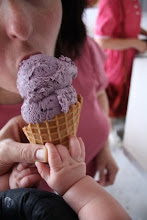10 Tips to Effectively Target the Lucrative ‘Tween’ Market
Article from Packagedfacts.com a leading producer of syndicated market research in the food, beverage, consumer packaged goods and demographic sectors.)
Article written by Editor - Don Montuori, November 2002,
With a buying power estimated to reach nearly $41 billion by 2005 and the influence over $74 billion in family spending each year, it’s no wonder that marketers of consumer goods are pulling out all the stops to reach the lucrative “tween” market.
Defined as youths between the ages of 8 and 14, tweens have landed squarely in the middle of corporate America’s radar screen. Old enough to both start earning a little money of their own and have a say in what Mom and Dad buy while they’re shopping, tweens represent a potential gold mine for marketers.
But they also present a challenge: a tween is a mass of contradictions. Consider the conflicting developments kids at this age face: an emerging sense of independence balanced by still-strong ties to parents; a strong desire to be cool and stand-out, yet not be considered by peers as an outsider; one foot still in childhood and the other making initially tentative and then bold steps toward teen-dom.
This is not an easy path for marketers to navigate. Yet with a certain understanding of and insight into this key demographic, a savvy marketer can stake a claim to mind and wallet share of the tween consumer, and, more importantly, his or her parents.
Here, then, in no particular order, are 10 tips companies can use to better reach and communicate with the tween consumer (these were adapted from data and analysis published in Packaged Facts’ study, The U.S. Tween Market).
1. Age-up. Pitch products to this age group using slightly older-looking kids. Tweens are aspirational in their age self-image: 43% of 12-15-year-olds said they would likely to buy a “teen” product.
2. Be diverse in your advertising. The tween demographic is one of the most diverse age groups. Showing multicultural youth, and also advertising in-language (Hispanic) and in-culture venues, demonstrates an appreciation of that diversity.
3. Talk to and respond to tweens directly. Mom may have veto power, but she’s no longer the prime selector of products -- particularly food and beverages.
4. Empower. Give tweens the sense that by using your product, they are taking independent steps and doing things for themselves. This can take two forms: give them a say in the marketing or promote the product as something kids can make or use on their own – microwave pizza and bagel bites are prime examples.
5. Tie-in. Brand and status matter to this crowd. Examples abound: major companies (such as Kraft and Tony’s Pizza) partner their products with music and sports celebrities.
6. Use targeted media. Reach tweens through popular radio stations, cable TV networks (e.g., Nickelodeon) and magazines (SI for Kids).
7. Associate your product with fun (especially if it’s not meant to be entertainment.) Use free in-store promotions, gifts-with-purchase, contents/sweepstakes; interactions with food products. They’re still kids, and like to have fun.
8. Recognize the multitasker. Kids in this age group juggle so many tasks it’s enough to impress the busiest executive. Products, food especially, have to be convenient and fast.
9. Allow for adventure, while still keeping it safe. Particularly when it comes to food, tweens are more adventurous than their parents were at that age: nearly all consider quesadillas to be an everyday food. Yet the comforts of the known weigh heavily, and if the taste, design or function is too far “out there,” they may not respond favorably.
10. Don’t forget Mom and Dad. You need to be sensitive to influence of parental opinions, particularly with respect to clothing and cosmetics. That’s because for most purchases, Mom and/or Dad are controlling the purse strings and making the purchase.


0 Comments:
Post a Comment
<< Home